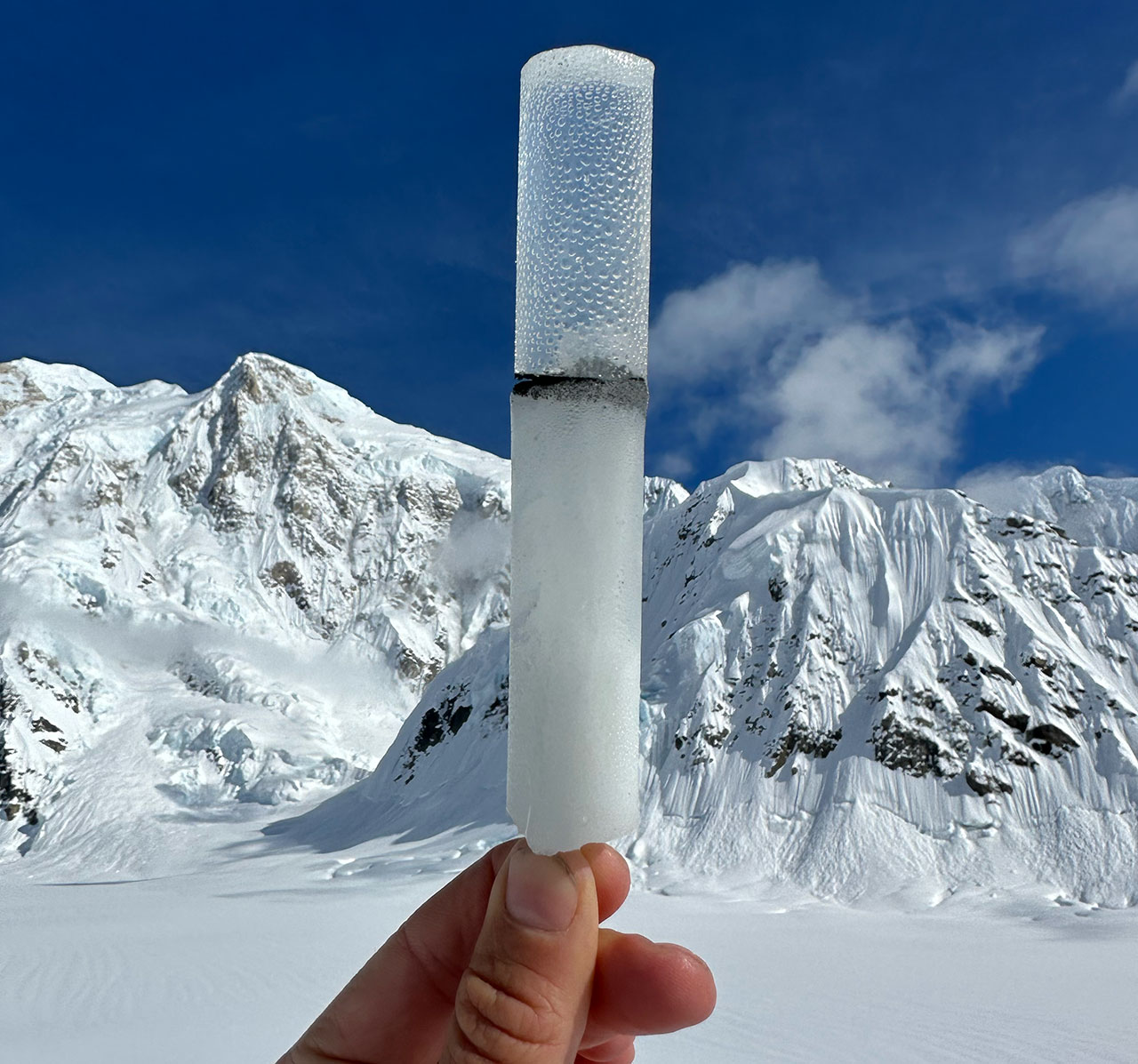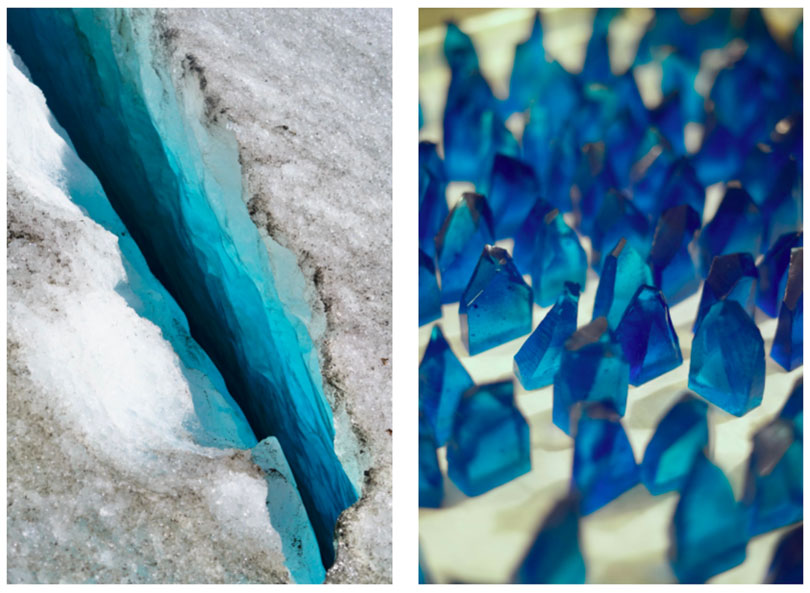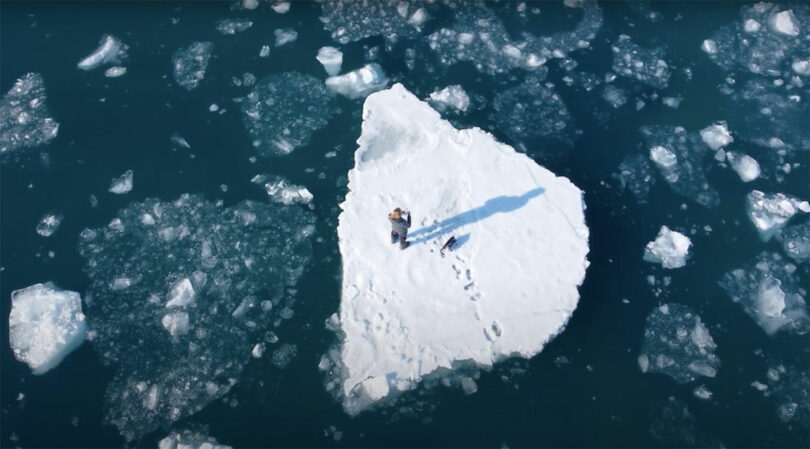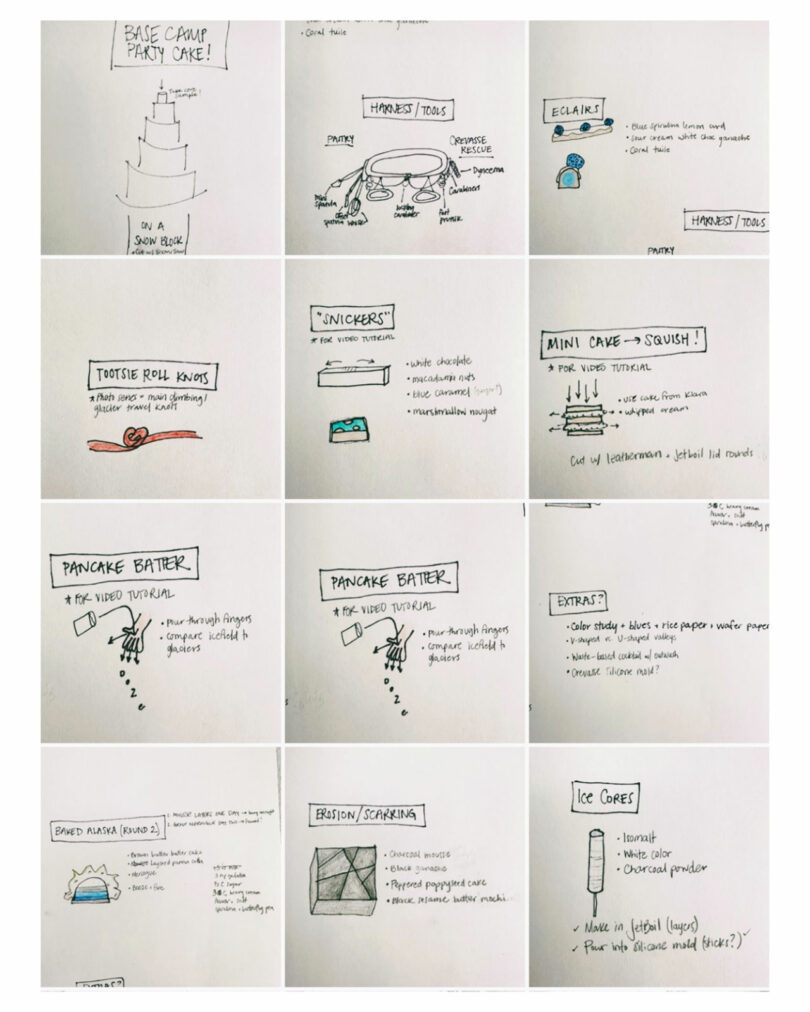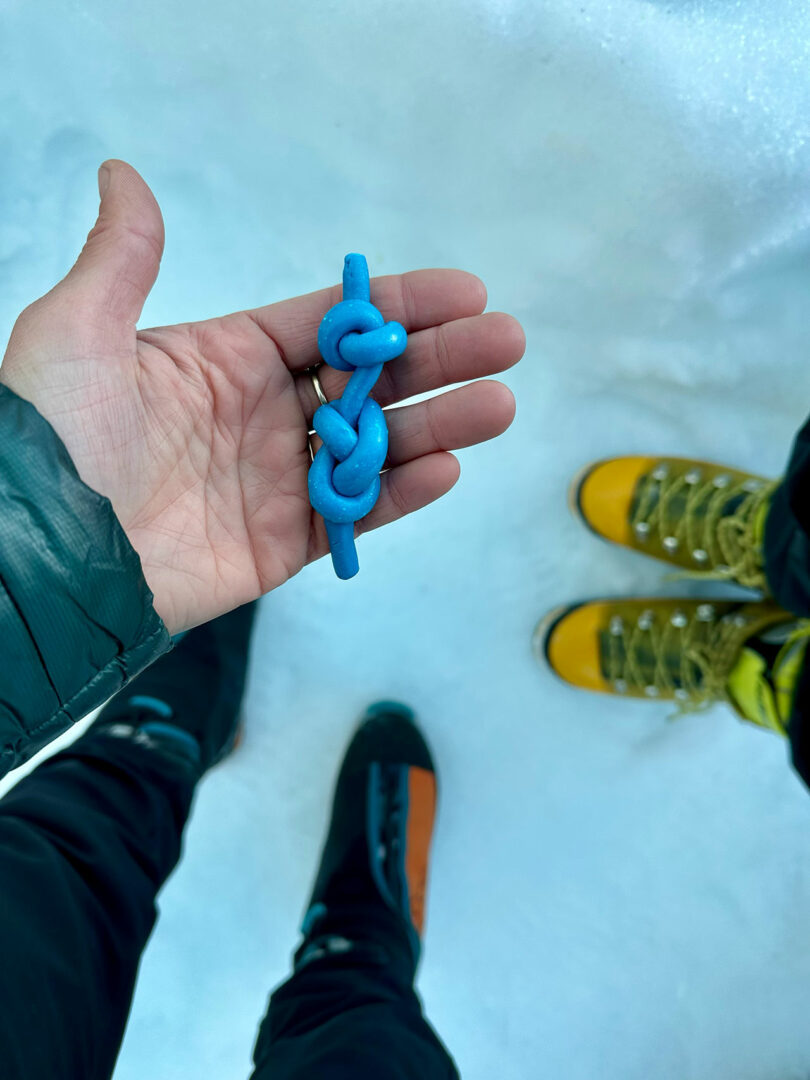Our planet is a hot mess right now, but there are artists making powerful work for change, while it’s on fire. Rose McAdoo is one of these artists. Whether crafting a cake atop a glacier or whipping up treats onboard an Arctic ship, each of her tasty creations tell a story. Her goal is to communicate the heavy topic of climate change and execute her sweet artform out in the field. It’s clever. Through playful and hopeful desserts, she is helping introduce and explain the science behind bigger ideas to as many people she can reach.
For Rose McAdoo, the challenge lies not just in the logistical hurdles of baking in remote locations but also in translating dense scientific data into digestible narratives. Her projects range from Ice Core Lollipops that mirror glacial records to Ocean Acidification Eclairs, sparking conversations on climate impacts.
Crevasse Lollipops – Champagne extract and blue Pop Rocks (to mimic the flavor, feeling, and sound effects of bubbles that get trapped in glacier ice) Photo: Rose McAdoo
She is a dynamic, courageous, curious, and informative human, my favorite kind. Her close connection to the wild is one most of us will only experience through VR. She is the real deal.
The first time I spoke with Rose McAdoo about how she bakes cakes to raise awareness around global issues, she called me from the front seat of her (parked) car while adventuring in Coober Pedy. She was on a mission to bake a dessert in this magically weird little Australian town located underground an opal mine.
Rose went from fours years of making glamorous wedding cakes in New York, to guiding other humans on glaciers in Alaska, to running a NASA research camp on Antarctica’s ice sheet. Rose makes desserts in the wild to connect her career skills with her artistic curiosity about our planet.
Rose initially took a job offer in Antarctica at the Long Duration Balloon facility on the Ross Ice Shelf, as the camp’s sous chef in 2019. After only a few years, she now manages this facility supporting NASA research and launches and is responsible for facility maintenance and operations; cargo, fuel, and water deliveries, not to mention the initial camp construction and end-of-season takedown.
Antarctica, picture the view… and now, the cold and the gear. Besides the admiration of just getting there, living there, and working a strenuous food service job, she makes the time to learn and create.
“As I learn, I’ve found that my brain explains topics to me by quickly visualizing new information as desserts. Making that intersection between food and science is really fulfilling to me – despite its dramatic challenges in the field.”
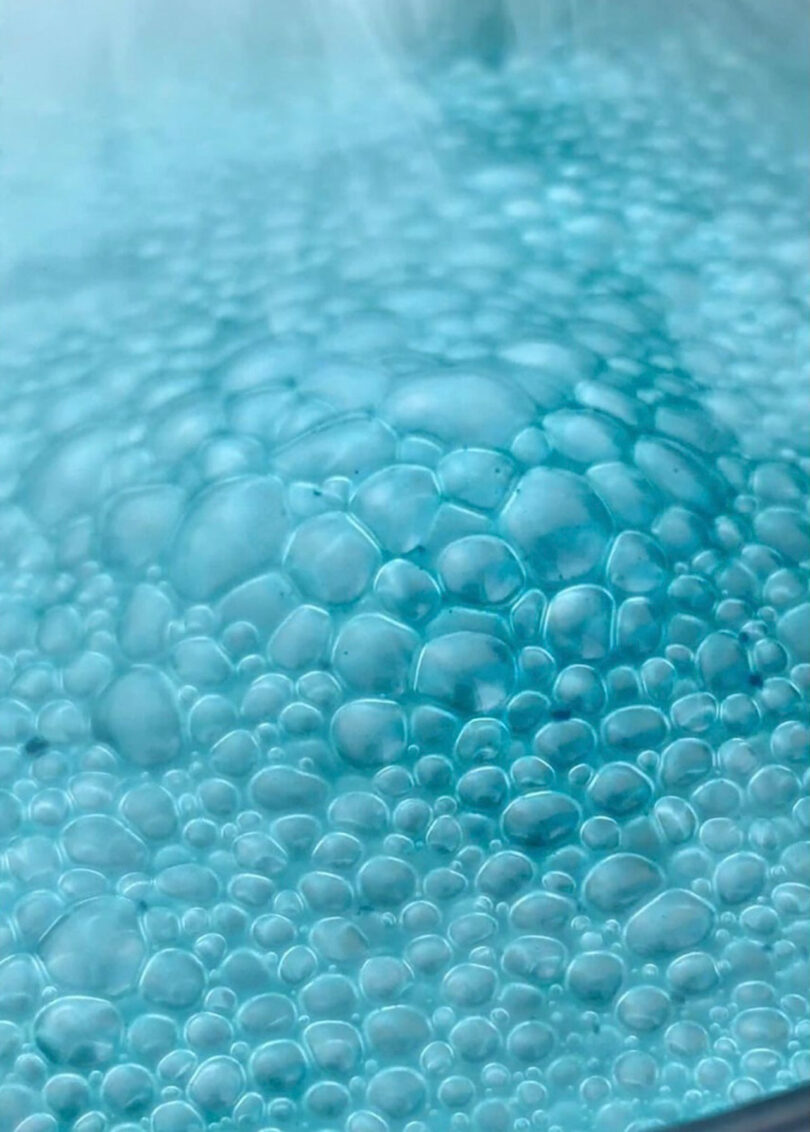
Sugar process – “I boiled sugar with a bit of water from Exit Glacier. Cooking that mixture to 300° F – six times that of Seward’s average summer temperature,” says McAdoo. Photo: Rose McAdoo
Rose enjoys living in her community made up of the support teams and scientists. The knowledge she’s acquiring while living and working in Antarctica drives her art form further. While attending a lecture at LDB, she couldn’t help but make a comparison to tempering chocolate, the science of her wheelhouse. Or understanding biodiversity/extinction affects by imagining removing an ingredient, like flour or baking soda from a cake recipe.
She explains: “In the same way, if you move one species from an environment or if you remove one piece of the glacier formation equation, it doesn’t necessarily still work. Every ingredient must be present in nature to maintain homeostasis.”

“Sign made me damn popular on Denali as every pilot, climber, and rescue ranger asked ‘do you *really* have cake in there?’” Photo: Rachel Heckerman
Given the seriousness of the environments Rose works in, she appreciates the levity of cake, and how it allows people to let their guard down and be more receptive to scientific ideas.
Rose had the guts to take her little cake sketches and ask “I wonder if I can pull this off? This is weird, and absurd, but I’m gonna make them anyway and see what happens.” Of course, while talking to her, I couldn’t take my catering hat off. I kept imaging all the improvisational problem-solving moments. There are no re-runs at that altitude. You must have multiple back up plans plus carry all the gear. “The rush from pulling something together in our planet’s wildest places makes me feel more alive than anything else,” McAdoo says.
Imagine how difficult it must be to execute that level of culinary muscle on an Antarctic ice shelf. Where are your prepping, assembling? What are you passing it on? Is the cake good at that temperature? But more importantly I wanted to know: “Who eats the cake? IS everyone eating the cake? Picture a climber hearing that someone just unveiled a 4-tiered salted juniper cake with evergreen buttercream made with glacier water. Brilliant!
Before onboarding a triple-masted ship for her recent Arctic Circle residency departing from Longyearbyen, Svalbard, Rose and I discussed her latest edible art collection. Eating Away shows the relationship, loss, and change in the high Arctic and the resulting impacts on humans and wildlife in our polar regions. She addresses consumption of information, loss of habitat, and human destruction, while celebrating our environment and making data digestible.
Here is a glimpse into her process from cake and dessert sketches to photographs:
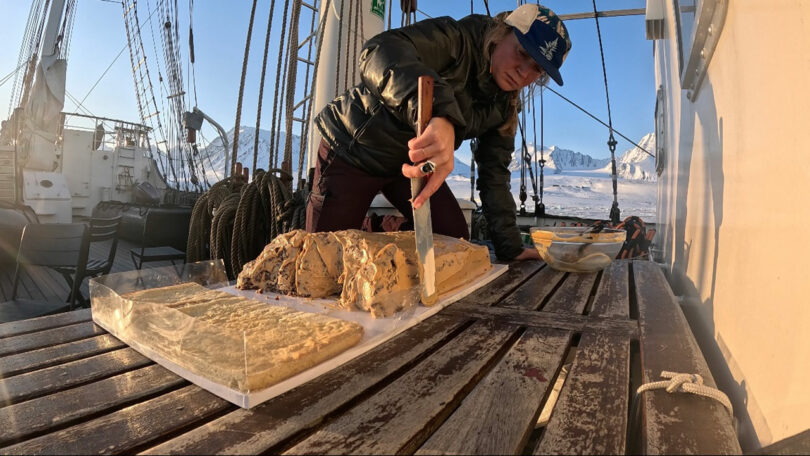
Rose McAdoo making, assembling, and decorating the cake onboard the Antigua tall ship. Photo: Rose McAdoo
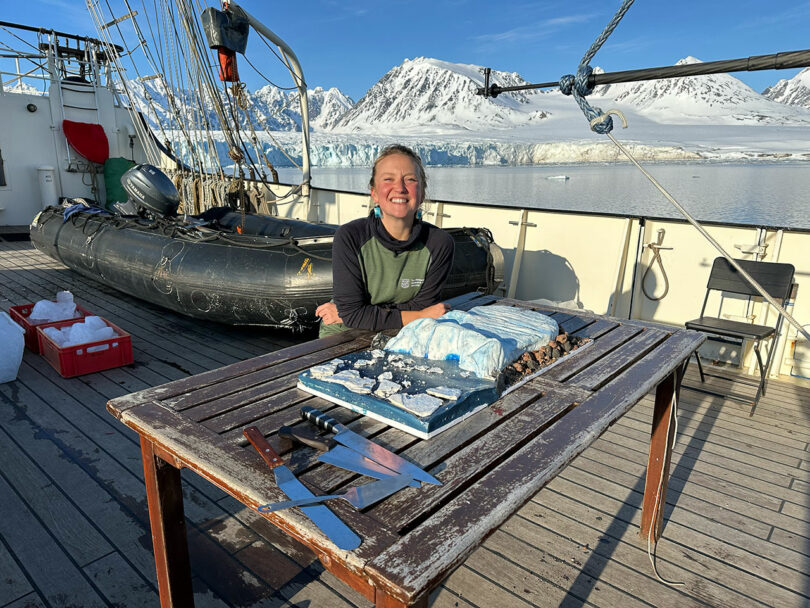
McAdoo and her dark rye malted cake with Norwegian brown cheese buttercream, a lingonberry soak, crispy stroopwafel crumble, and salted edible rocks made with charcoal, cardamom, poppy seeds, black sesame, and dark chocolate Wasa biscuit. Photo: Meg Roussos
Rose aims to expand her impact with upcoming exhibitions and a feature-length documentary. With help from grants and self-financing, her work continues to bridge the gap between art, science, and public awareness, aiming to make daunting topics like climate change more accessible through the universal language of food. The upcoming release of her Denali project documentary, Creative Approach, is making its way through the film festival submission world. Rose shared a sneak peek trailer with us here:
Creative Approach documents the two-week collaborative art residency at Denali Base Camp between McAdoo, painter Klara Maisch, and filmmaker Rachel Heckerman. Each pushing their creativity higher, bigger, and harder than ever before at 7,200 feet.
Rose produced a bunch of desserts that communicated various aspects of glacier science in a Jet boil camp stove on top of the 44-mile-long glacier. Klara painted a 7-foot-tall oil landscape, and Rachel filmed and photographed the whole project while snow camping for the first time.

Elevating passed bites of Crevasse Candy Bars – Blue ginger caramel, macadamia nut nougat, Alaskan sea salt Photo: Rachel Heckerman
Rose McAdoo’s life journey is a testament to the power of creativity in facing global challenges. As she navigates between icy landscapes and pop-up kitchens, Rose exemplifies how art can inspire change – one delicious creation at a time.
To learn more, head to rosemcadoo.com.
